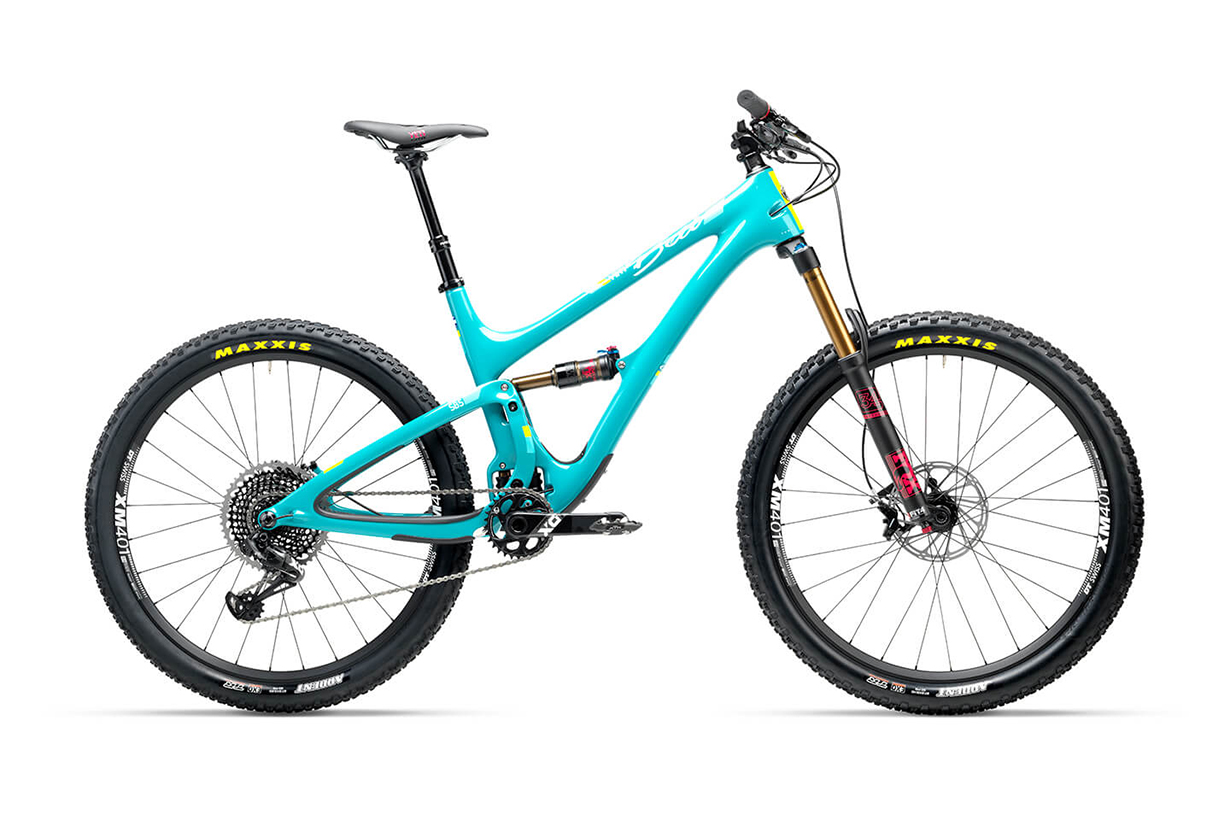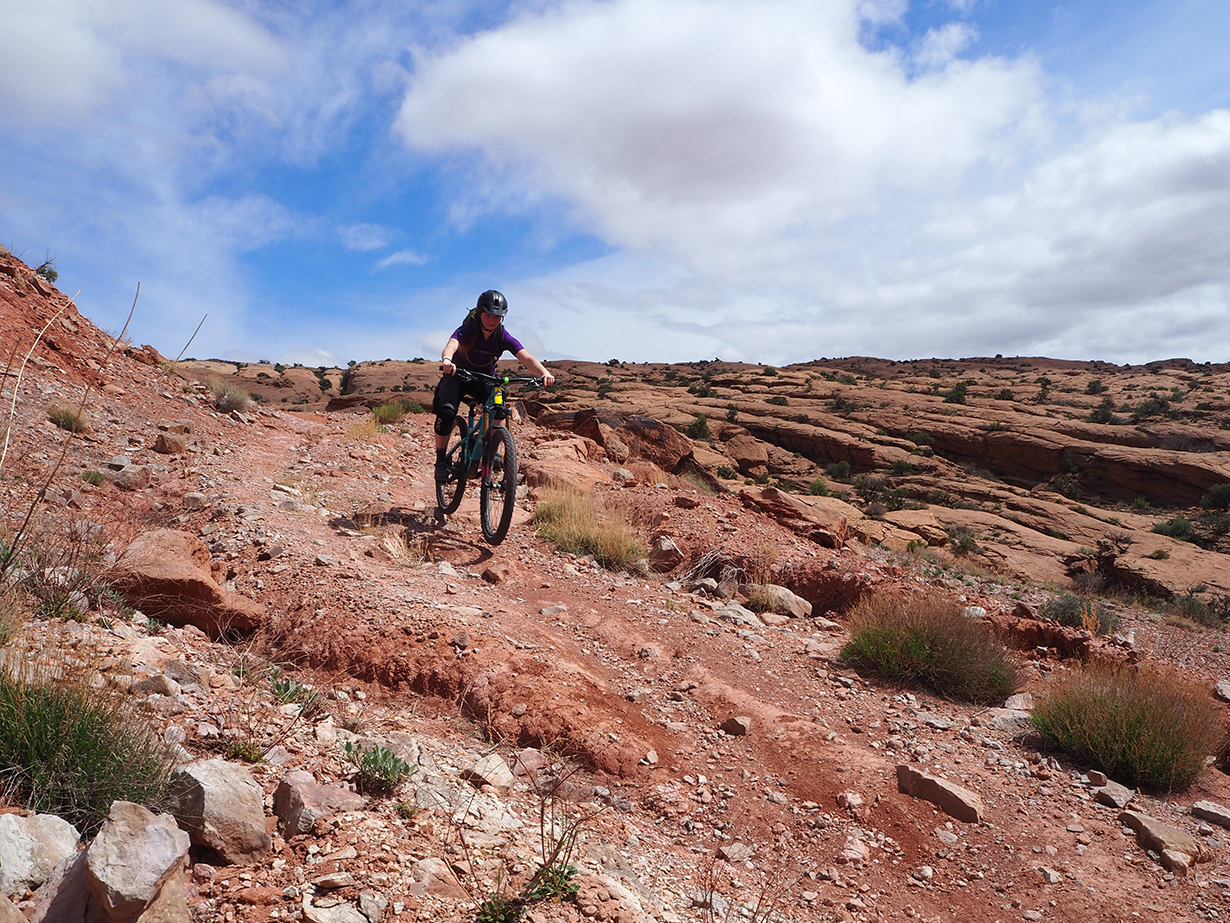Yeti SB5 Beti
Size Tested: S
Geometry: Here
Build Kit: TURQ XT
Build Overview:
- Drivetrain: Shimano XT
- Brakes: Shimano XT
- Fork: Fox 34 Factory 150 Boost
- Rear Shock: Fox Float Factory
- Wheels: DT Swiss 350 XM401 Boost
- Seatpost: Fox Transfer Dropper Post
Wheels: 27.5′′
Travel: 127 mm rear / 150 mm front
Blister’s Measured Weight: 27.25 lbs without pedals
MSRP: $6,499
Reviewer: 5’2”, 125 lbs.
Test Location: Moab, Utah

Intro
We swung through Outerbike in Moab a few weeks ago to hang out, ride some bikes, and partake in the good times that happen when bike people gather together in the desert.
If you don’t already know about Outerbike, you should; it’s a great opportunity to demo new bikes on some great trails. There are three Outerbike events throughout the year — Moab in the spring; Crested Butte in the summer; and Moab again in the fall. Each event lasts 3-4 days, and you can get more information at outerbike.com.
So we had three days to ride some of this year’s new bikes on a smattering of Moab’s best trails. And while it was a great opportunity to learn a good bit about a number of new bikes (including the one reviewed here), we only rode these bikes for a few hours each, so keep in mind that this isn’t our normal full-scale review.
Intro
The Yeti SB5 Beti is Yeti’s women’s 650b short-travel trail bike. It uses the same frame as the Yeti SB5 with a few different components, and a lighter shock tune to make the bike female-specific.
At first glance, the SB5 Beti may seem like a confusing mix of a lightweight trail bike and playful all-mountain bike, since:
(1) Its relatively short 127 mm of rear travel is paired with a significantly longer 150 mm fork.
(2) The bike pedals extremely well even though the geometry has dimensions usually seen on bikes closer to the 140-160 mm travel range.
(3) Most of the components are ready to shred, but some cater more to efficient pedaling.
But all of these aspects come together to make a light and playful bike that is ready for all-day cross-country rides, while still being able to manage rowdier descents.
Frame and Geometry
The SB5 Beti TURQ frame is made with Yeti’s higher-end TURQ carbon fiber. Yeti made a new lower-end carbon for 2017 to hit a lower price point, and re-named the higher-end carbon, “TURQ.” The lower-end carbon is said to maintain the same stiffness and durability as the TURQ, while gaining 0.77 lbs for the size Small. I found the TURQ frame to be extremely stiff, but have not spent time on the baseline carbon frame for comparison.

Yeti also redesigned this year the SB5 Beti frame (and unisex SB5) to boost its descending qualities. The redesigned geometry of the SB5 Beti makes it clear that Yeti wanted this bike to fall squarely in the “trail” category. The headtube angle is slackened to 66.5°, the chainstays are shortened to 437 mm, and the seat tube angle is steepened to 73.5° – 73.7° (depending on frame size).
They also gave the bike an extremely low standover height of 683 mm for a size Small, which Yeti claims is the lowest of any trail bike. I haven’t verified their claim, but I can confirm that the top tube is pretty low.
Fit
At 5’2”, I fall within the “XS” size on the size chart, but I felt a bit cramped while seated on the XS. So I opted to test the size Small to get a reach of 402 mm and a longer wheelbase. The size-Small bike was comfortable and not too spread out. But I felt a bit upright and had some trouble getting over the front while descending, which I found to be key for confidently descending on a bike with a 23 mm travel differential between the front and rear.
At 5’2” with short legs, I have a hard time standing over some bikes, but the SB5 Beti gave me plenty of room. I also had room to fit a 125 mm dropper seatpost, which is not common for me. Usually, I have to swap out 125 mm dropper posts for a shorter length, but the SB5 Beti gave me room to spare.
NEXT: Build, Climbing, Etc.

Good review – Thanks!
Great review. I was wondering why the bike felt so short and upright… but now I understand that it’s the 127mm of rear suspension paired with the 150 up front. It does make it hard to get over the front wheel on descents. Climbing is a dream.
Roberta
Great review, thanks!